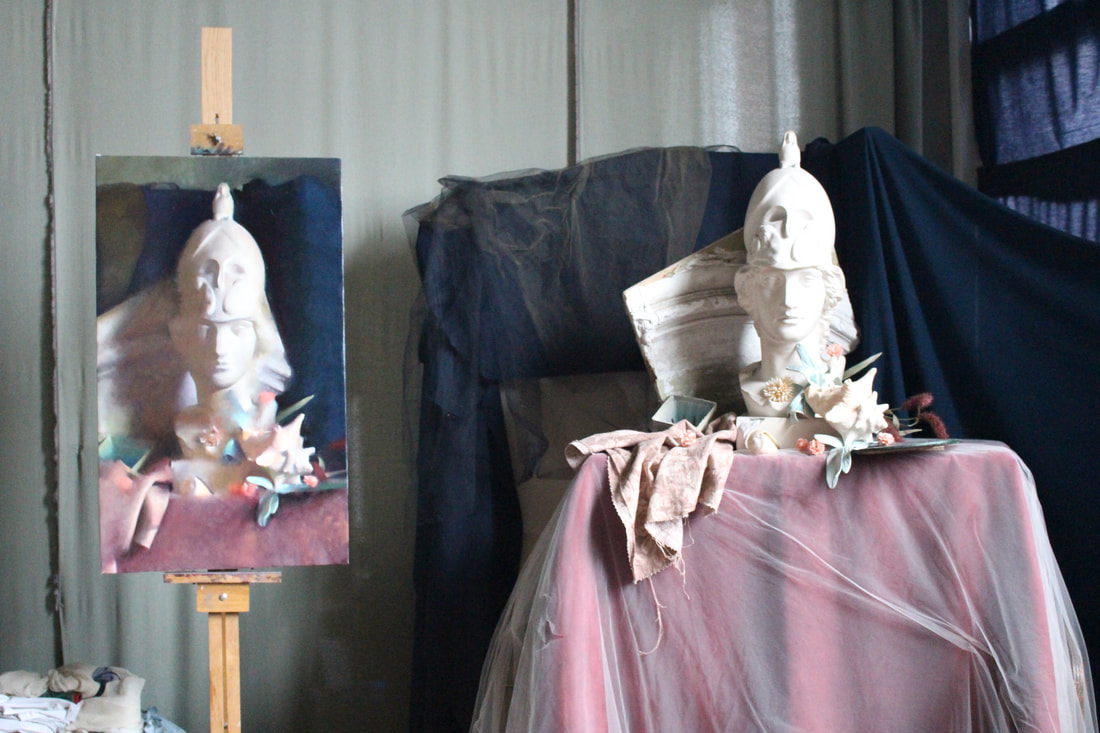|
When I think about general reactions to still life, I remember a good number of people, including my past self, saying, "Still life is boring."
To be fair, even still, I have to agree that many still life paintings are. So why should you as a viewer and we as a culture enjoy still life? Because still life offers a brilliant opportunity to enjoy all of the best things that painting can offer: color, light and form, harmonious composition, chiaroscuro (lost and found), the poetry of omission, and even the close study of detail. In a word, the best still life offers beauty. The common viewer might then reply: "What is so beautiful about making a pot or a gourd or some dishes in paint? Often people paint very ugly pots, gourds, and dishes, even if in many ways they look realistic." What often is not understood about the art of still life painting is that the best artists aren't necessarily interested in the objects per se. The amateur artist is really excited when he accomplishes a reasonable likeness of a pot, and rightfully so; we all have to start somewhere. However the more mature artist is interested in what the pot is doing that makes it beautiful. Even more importantly, the mature artist is interested in what the pot is doing with and to everything else in the picture. The mature artist is interested in the particular beauty and harmony made by the objects even more than the objects themselves. From an artistic point of view, some of the things that an object can "do" that make it beautiful include rolling its form, shimmering in light, "singing" certain color notes, or sweeping a particularly lovely contour line. The artist wonders at and falls in love with these attributes and is not happy until he has captured them in his painting (and seldom is he happy even then!). A particular point in my life stands out to me when I noticed for the first time, in what I would call an artistic way, what an object was doing. I distinctly recall, back in 3rd or 4th grade, setting up a still life at home, all by myself. The reason that I did, I remember clearly: I had recently read and more importantly seen the illustrations from the Old Bear/ Brown Bear by Jane Hissey - and had been deeply struck and even in awe of how ROUNDED the stuffed animals were! What a marvelous thing! How could a flat page take on three dimensional form like that? I had to find out. I had to get that wonderful, beautiful thing in my own drawing. So I set up four or five of my siblings' stuffed animals and got a large, yellowed, mostly unwrinkled piece of packing paper and a pencil and started drawing. And I got a little piece of what I was looking for. Since that day I have found many other things that objects "do" that I have fallen in love with: how an object glows with light; when it hits a pure, clear color note; when it disappears; when its edge projects with a magical silhouette. Every one of these things and much more can be found in still life. So next time you see a still life, try to look past the vase of flowers or the teapot and see what those objects are doing and you might just find something you love.
2 Comments
1/7/2023 07:02:47 am
Excellent article! Thank you for your excellent post, and I look forward to the next one. If you're seeking for discount codes and offers, go to couponplusdeals.com.
Reply
Leave a Reply. |
AuthorHello there, I'm John H. Folley, an oil painter in the Boston School tradition. Thanks for visiting the Beauty Advocacy Blog, where it's my job to help you become a more discerning art appreciator. Connect with John:
Categories
All
Archives
February 2024
|

